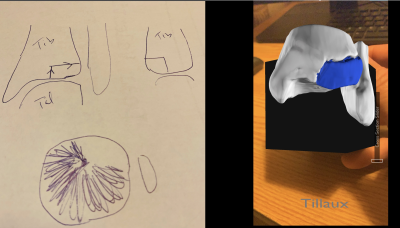Out-of-This-World Solutions (VR/AR) for Improving Education & Patient Care
Jesse Courtier1
1University of California San Francisco, United States
1University of California San Francisco, United States
Synopsis
Augmented reality (AR) and virtual reality (VR) tools for radiology are starting to make a difference in real-world educational and clinical applications. This talk provides examples of real educational and clinical applications in the field of radiology with discussion of methods of implementation.
AbstractAugmented reality (AR) and virtual reality (VR) tools for radiology are starting to make a difference in real-world educational and clinical applications. AR is a technology that allows integration of digital information on a real-world background, while VR is an immersive experience with the digital experience at its center. In this presentation, AR and VR platforms will be further defined and discussed. Current educational applications in medical student and resident training and patient experience with supporting evidence will be reviewed. Methods for incorporating this into practice will be provided. Finally, exciting future applications will also be reviewed.
Acknowledgements
References
- Uppot, Raul N., et al. "Implementing virtual and augmented reality tools for radiology education and training, communication, and clinical care." Radiology 291.3 (2019): 570-580.
- McCarthy, Colin J., and Raul N. Uppot. "Advances in virtual and augmented reality—exploring the role in health-care education." Journal of Radiology Nursing 38.2 (2019): 104-105
- Papanastasiou, George, et al. "Virtual and augmented reality effects on K-12, higher and tertiary education students’ twenty-first century skills." Virtual Reality 23.4 (2019): 425-436.
- Schirmer, Clemens M., et al. "Virtual reality–based simulation training for ventriculostomy: an evidence-based approach." Neurosurgery 73.suppl_1 (2013): S66-S73.APA
